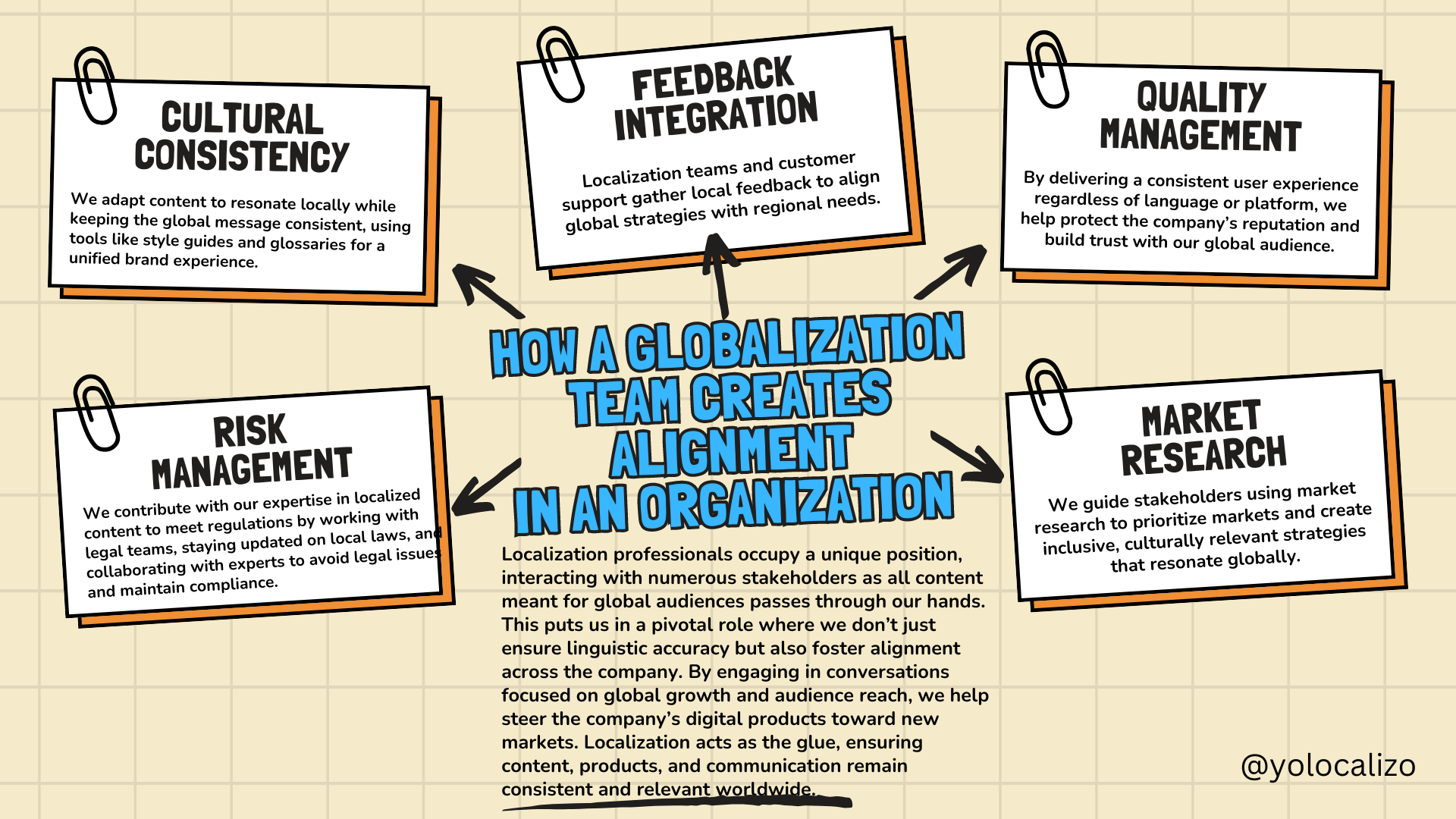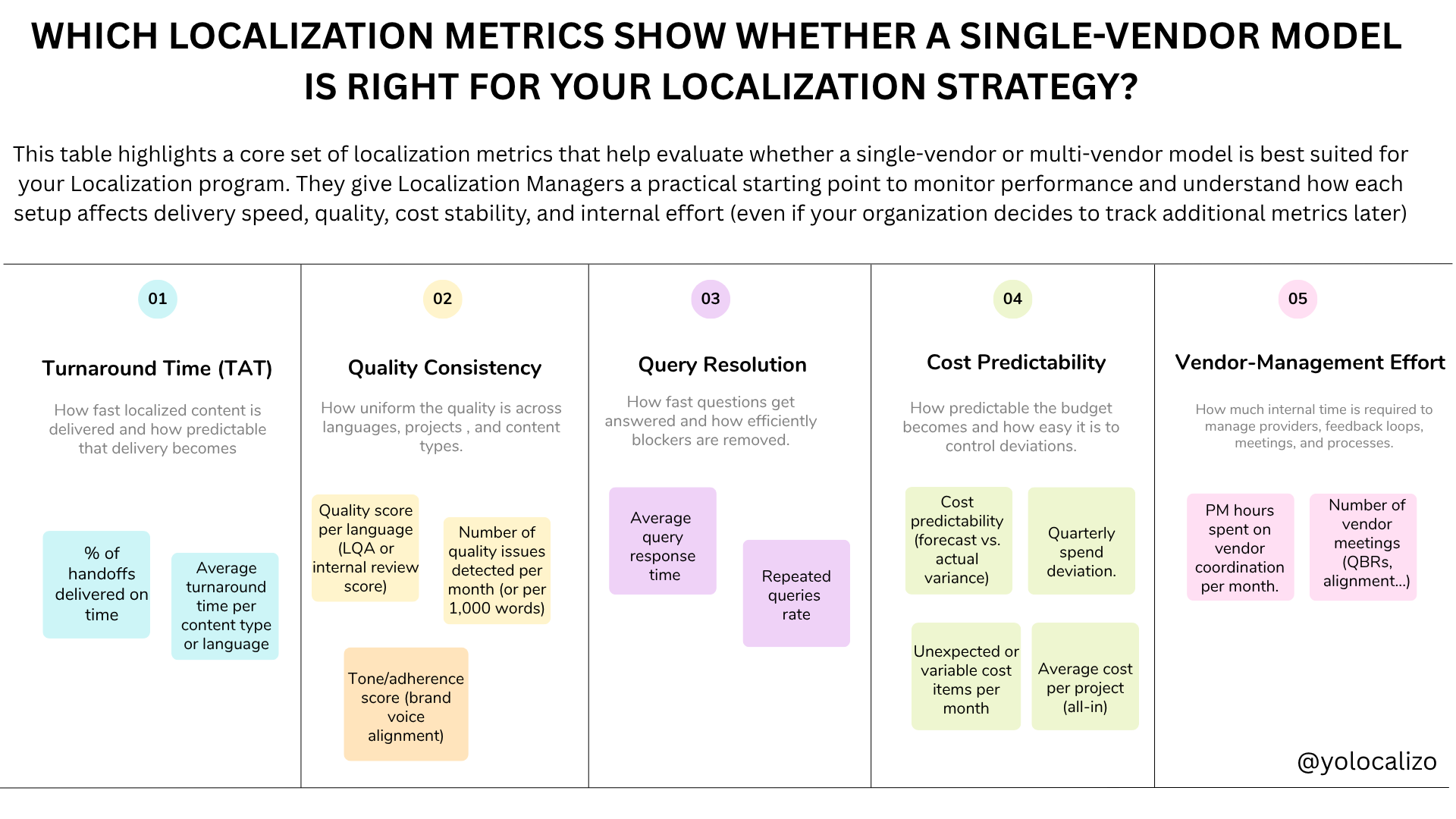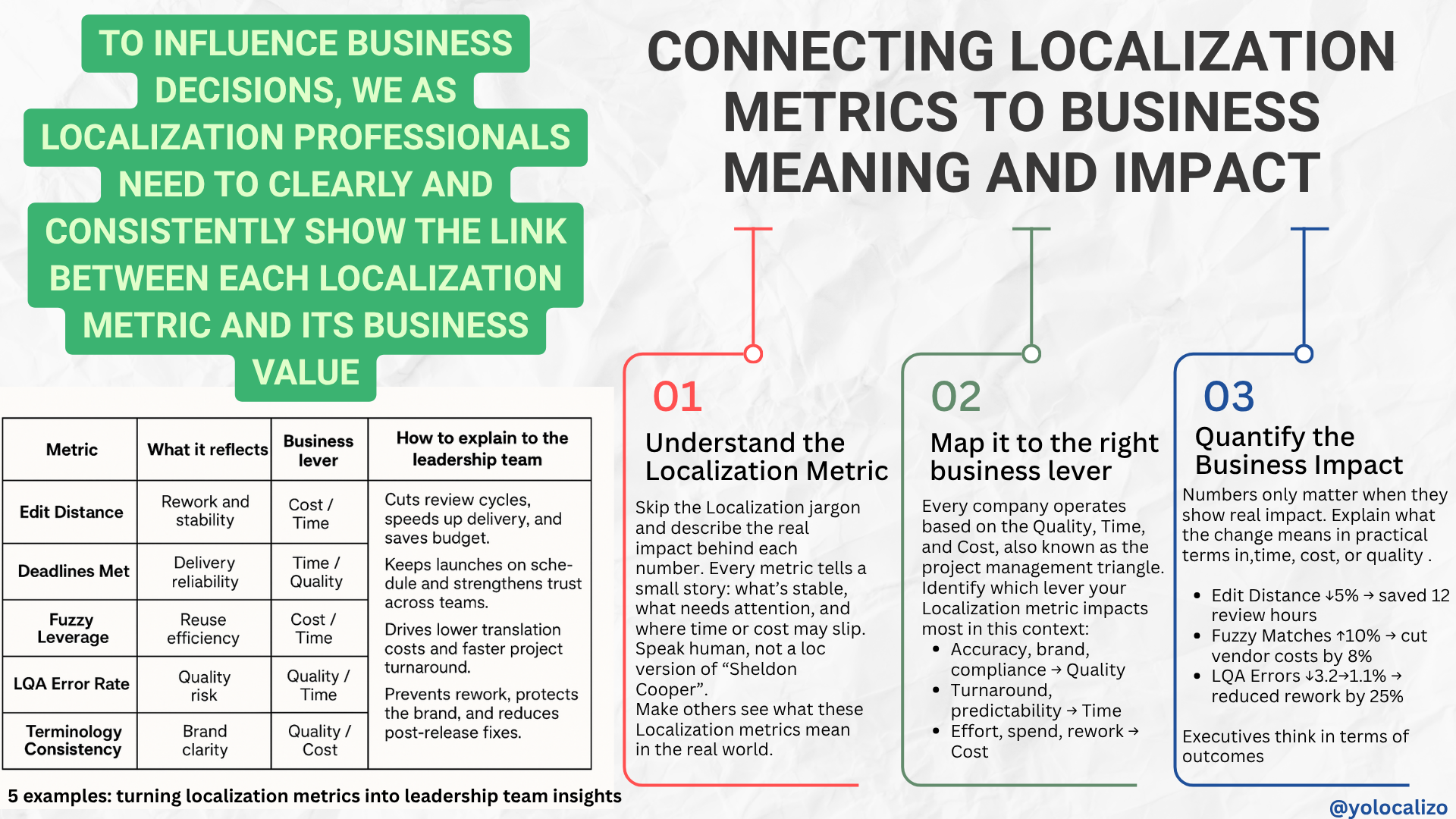The Localization mindset shift: from only providing services to also thinking like a product team.
Localization is full of confusion. Some are as old as the industry itself, like the ongoing confusion between translation and localization for many outsiders. And lately, other '-ation' terms have joined the mix and made things even fuzzier, like culturalization or transcreation, each adding another layer to explain.
Others go deeper. What comes first: UX or localization experience for each market? And how do we influence product decisions in ways that reflect this?
And then there are even bigger philosophical questions. Are we a service function that responds to requests? Or can we actually grow beyond that and help shape the direction of the products, systems, and strategies we support?
Traditionally, localization teams have been seen as service providers. We’re called in when something needs translating, reviewing, or fixing, often under pressure and often too late. Many of us know the feeling: we’re only noticed when something goes wrong.
The text doesn't fit.
The message doesn't land.
A release is delayed because translations weren’t ready.
It’s not that the work isn’t important; it absolutely is. We translate product UI, support global campaigns, help customer support and legal, and catch last-minute bugs before they go live. We’re dependable, fast, and care deeply about quality. We’re the reason our products reach users around the world.
But what if you are in a scenario where …. lately, you may have started to feel stretched. There are more requests than time. You’re fixing the same issues again and again. Deadlines are tighter. Expectations keep growing. And despite all your effort, some stakeholders still see you as “just the translation team.”
And sometimes, the worry goes deeper. With AI tools becoming more visible in workflows, some might start to believe localization can be fully automated. Others may not see the difference between good-enough and truly high-quality localized experiences (even more in markets that often get less attention!).
That’s exhausting.
This frustration doesn’t come only from how others see us. It also reflects how we sometimes see ourselves: stuck in the service role without imagining a different position. What if we could redefine how we show up? What if we could move from being reactive, busy bees always jumping from task to task, to the ones shaping the hive itself? Building the structure instead of just keeping it running?
We’re not doing anything wrong by offering Localization as a service. But if we want to grow our role and stay relevant in a world that’s being reshaped by AI use cases, we can’t keep showing up the same way we always have
A mindset shift: from service to product thinking
The idea I propose here is not about dropping the service mindset. It’s about expanding it.
As service providers, we solve problems.
We move quickly.
We support teams.
That’s valuable, and it builds trust.
But if we want to be seen as strategic partners, we have to create more than translations.
We need to create workflows, repeatable solutions, and infrastructure that help the entire company localize more efficiently.
That’s what it means to think like a product.
What does “localization as a product” mean?
Thinking like a product doesn’t mean launching features or writing code in the traditional concept that a product team does. Yes, they do those things. But if we look closer, their main job is to create solutions that can be used again and again to solve everyday problems.
We can do the same, but with a localization mindset.
“Localization as a Product means designing tools, systems, and workflows that make it easier for other teams to collaborate with us so we can reduce repetitive work, scale our expertise, and focus on what truly needs a human touch.”
Think about the kind of repetitive work most of us deal with, such as explaining how to submit content for translation, fixing the same formatting issues across different tools, rewriting source strings that aren’t localizable, managing back-and-forth with reviewers, or answering the same stakeholder questions about time format. Instead of solving these one by one every time, we can turn them into scalable solutions templates, automation, workflows or tools that others can use on their own.
That’s product thinking applied to localization.
We might go even further. We could build dashboards to track localization metrics, train a custom GPT that checks whether English source text is localizable and clear, or create LQA models that score quality automatically and surface trends across languages.
That’s not just ops work. That’s Localization product thinking.
Why can only offering services hold us back?
When our team is focused only on delivering services, even when we do it well, it’s easy to get stuck.
We stay busy, but we never get ahead. Our knowledge sits in chats and email threads. Our value is real, but it’s hard to see from the outside. When people don’t see it, they start to question it or assume it can be replaced by a machine.
It’s frustrating. And it can make the work feel smaller than it really is.
That’s why building tools, workflows, and systems brings our value visible and shows that localization isn’t just about translating text but helping the company operate globally with quality and care.
What happens when we do both
We don’t have to choose between being helpful and being strategic. We can do both.
We can continue supporting teams with empathy and attention, but we can also build things that let those teams support themselves. We bring human insight to the work that needs it and reduce friction elsewhere with smarter systems.
Here’s how that looks in practice:
Where to start
Starting is the worst thing when we are thinking about shifting towards a more product localization mindset, because we might not even know where to start, or feel overwhelmed. But hey, do not panic! We can start small. We just need to notice the patterns, which will give us pointers about where we might start … So, to avoid the paralysis for analysis we can reflect on
What do we repeat every week?
What advice do we give all the time?
What tasks take too much time and bring too little value?
These are signals. From there, we can turn repeatable work into reusable products: checklists, shared documents, Jira workflows, Looker dashboards…
Pick one. Build it. Test it with a team that’s open to trying something new.
That’s the first step.
Click HERE to download the infographic
How AI agents and custom GPTs can help
We hear a lot of negativity around AI, and this post isn’t here to settle that debate. It’s not my role to tell anyone how to feel about it. Each of us must reflect on what AI means for our work and lives.
What I do know is this: AI can be a powerful ally as we shift toward treating localization as a product. We don’t have to build everything from scratch anymore. Tools like ChatGPT can help us create product-like solutions even if we don’t know how to code
We can create a custom GPT trained on our style guide, workflows, and most common questions and share it with marketing, product, or support teams
We can also use GPT to:
Check the clarity or localizability of English source content.
Draft LQA feedback summaries.
Spot patterns across reviewer comments.
Prototype validation rules and terminology checks.
This is how we begin to turn our service knowledge into scalable products. That’s exactly what product thinking looks like.
Final thoughts
Our work already brings value. We do what few others can. But if we want that value to scale and be seen , we must build more than services.
We can build systems.
We can build tools.
We can build visibility.
We can build partnerships.
And we can let AI help us build smarter.
Localization has traditionally been perceived and often offered as a service. But we can treat it like a product, too. We can change how others work with us and how they see what we do.
That’s how we stop being the last step in the process and start becoming part of it.
@yolocalizo













This feels like a pivotal moment. Localization teams are being asked to support more markets, move faster, use AI responsibly, and show impact, not just output. Expectations are higher than ever, but many teams are still trained mainly for execution. We are strong at delivering localization work, yet we often struggle to move from output to outcome and to clearly explain the impact of what we do.